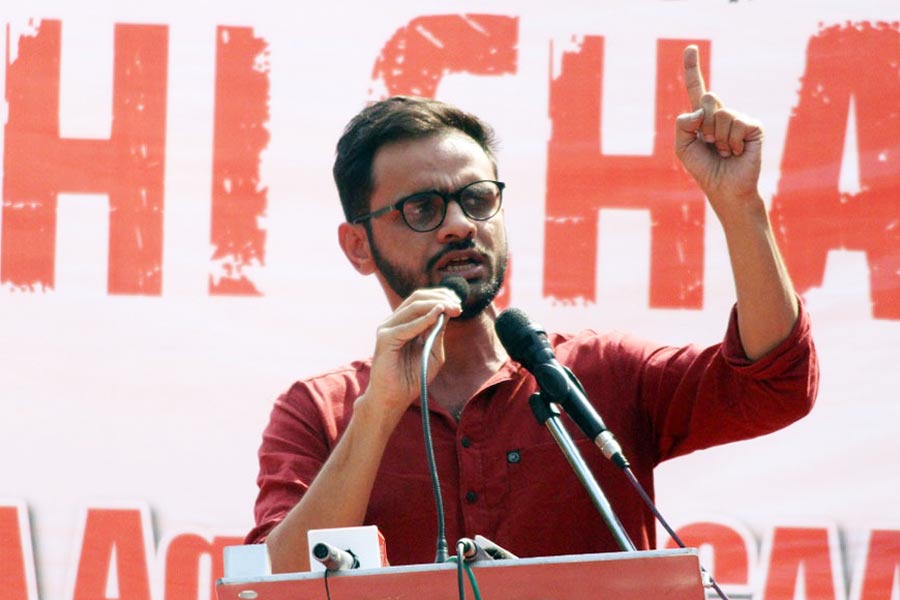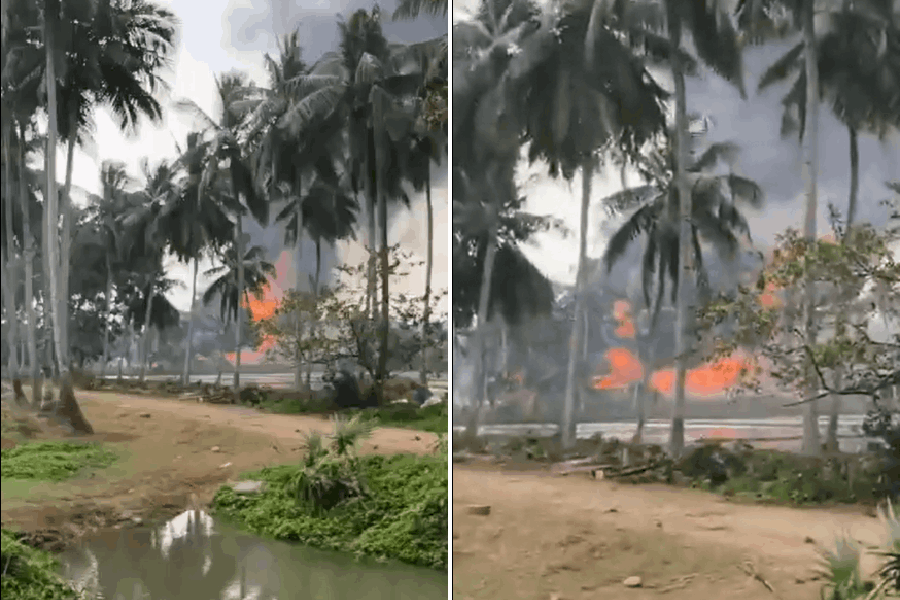Phyan dao! This heart-rending cry for rice gruel that resonated through the streets of Calcutta in 1943, the year of the Great Bengal Famine, became the collective cry of Bengalis for survival as they died like flies. At least three million Bengalis perished that year. The streets of the city to which countless skeletal humans fled, abandoning their farmland hovels in desperate search for food, or even a drop of rice gruel, became strewn with their corpses. Even in “white” Park Street, starving villagers would fight with scavengers for the choicest morsels flung into dustbins by American GIs. The city witnessed macabre scenes of packs of dogs and vultures feasting on abandoned corpses.
We were reminded that history can repeat itself when the Prime Minister, out of the blue, declared on March 24, 2020, a 21-day lockdown to contain the pandemic, dealing a death blow to the lives and livelihood of hundreds of thousands of migrant labourers and their families. They had left their distant villages in search of a better life in metropolises. And now, they trudged miles back without social security, food or shelter, hounded by fears of infection and lack of income. In the nightmarish days that followed, jobless workers had little to subsist on. Near-famine conditions prevailed.
My friend of long-standing, Moushumi Bhowmik, singer, songwriter and archivist, sounded a dire warning while recently singing in her plaintive voice Haripada Kushari’s Sonar Bangla holo smashan, about “golden” Bengal being reduced to a graveyard in the 1943 famine. She stressed the words: “Durbhiksha abar asichhe bhishan” — a famine is again round the corner. That is a truth we can’t afford to forget.
In 1949, the University of Calcutta published the book Bengal Famine by forgotten anthropologist Tarak Chandra Das, who had conducted a survey of the “man-made famine” during 1943-44 of 10 districts of undivided Bengal. According to Abhijit Guha’s eponymous book about Das, the university had sanctioned Rs 500 for the survey. Referring to the survey, Jawaharlal Nehru had written in The Discovery of India: “They arrived at the figure of about 34,00,000 total deaths by famine in Bengal... Official figures of the Bengal Government based largely on unreliable reports from village patwaris or headmen gave a much lower figure.”
Das had expressed scepticism about another survey done by P.C. Mahalanobis and K.P. Chattopadhyay on the after-effects of the famine. Das said: “In fact, they lived on the narrow margin which separates subsistence from starvation. Whenever there was even a slight disturbance of the balance either through natural or artificial causes a large number of them fell
victims of starvation.”
The devastating famine has been described as a “policy failure” and according to a 1994 UN Human Development Report, it “was the product of an economic boom” and farmhands and other workers in villages found “they could no longer afford to eat”.
Amartya Sen, who won the Nobel Prize for his study of famine, welfare and poverty in 1998, according to a report in The Guardian, said: “...the mass deaths came about as a combination of wartime inflation, speculative buying and panic hoarding...” Later studies and journalist Madhusree Mukher-
jee have squarely blamed Winston Churchill and the British government’s “denial policy” in the region for aggravating the situation.
Paradoxically, this cata- clysm revolutionised the culture scene in Bengal as writers and artists redirected their focus from fiction to grim realities. Art historian Pranabranjan Ray says litterateurs, more than artists, responded with alacrity. It galvanised the creativity of Tarasankar Bandyopadhyay, Manik Bandyopadhyay, Premendra Mitra, Birendra Chattopadhyay, Subhash Mukhopadhyay and they came up with a raft of poetry, novels and short stories which never fail to move us.
In 1944, Bijon Bhattacharya’s play Nabanna on the famine staged by the Indian People’s Theatre Association electrified the audience. It was a turning point in the history of Bengali theatre.
Both artists trained in academic realism and those willing to experiment had undertaken a mission to document man’s inhumanity to man. Chittaprosad Bhattacharya was the foremost of them as the self-taught artist recorded the famine both through his powerful and often satirical drawings, linocuts and woodcuts, and writings. Sunil Janah did the same with his camera. The British government impounded and destroyed most copies of Chittaprosad’s first publication Hungry Bengal. Somnath Hore, Gobardhan Ash, Zainul Abedin, Ramkinkar Baij, Gopal Ghosh, Paritosh Sen, Subho Tagore and Bhabesh Sanyal have left behind their drawings, paintings, graphic prints and sculptures, as did more established practitioners like Nandalal Bose (a skeletal Rudra accompanied by the bounteous Annapurna), Atul Bose (an entire album) and Debiprasad Roychoudhury. They expressed their horror at this dance of death.
In 1993, on the 50th year of the famine, artist Ganesh Haloi and journalist Nikhil Sarkar fronted by the organisation Daay organised an exhibition to retell this harrowing tale in Asutosh Memorial Hall of the Indian
Museum. Recalls Haloi: “We collected works from various artists. We had invited Zainul Abedin’s wife, and everyone turned up at the opening.”
On the 80th year of this carnage, it seems to have sunk into oblivion. Not a word has been uttered in remembrance of this outstanding human tragedy — genocide, some say. Successive governments have made no effort to acquire this invaluable artistic legacy born of angst and des-
pair and memorialise it. Now, these have turned into merchandise. Ganesh Haloi comments: “People have become too self-centred today. People’s conscience is blunted”.
It is the same in Bangladesh. Octogenarian Nazrul Islam, emeritus professor of Dhaka University and art writer, said in a telephone interview: “We have honoured Zainul Abedin, who had single-handedly established the faculty of fine arts, University of Dhaka. But there is no discussion on the famine.”
I had given up in despair, when I received a WhatsApp flyer: “Sangeet Shyamala in collaboration with Art Alinda invites you to the preview of works by Gobardhan Ash curated by Jyotirmoy Bhattacharya.
14th Dec... at Surrendra Paul Art Gallery New Delhi”.
My mind went back to a Sunday in 1993, when I had visited Begumpur village in Hooghly district, to celebrate the 87th birthday of Gobardhan Ash along with artists Ganesh Haloi, Rabin Mandal, Prakash Karmakar and his neighbour Bijan Choudhury and many others.
I distinctly remember the wiry artist wearing a clean, white dhoti and undershirt, and glasses with thick lenses, in obviously straitened circumstances, sitting upright on his bed. He did not seem to mind for he painted, drew, wrote and made penetrating self-portraits daily till almost the last day of his life, said his fourth son Nirban. He died in the relative obscurity of his village at the ripe old age of 89 in 1996. It is difficult to believe now that when the Calcutta Group to which Ash belonged and the Progressive Artists’ Group of Bombay jointly held an exhibition in this city in 1950, it was said Ash commanded a higher price than M.F. Husain!
Always with a rebellious streak for which he couldn’t complete his art training either in Calcutta or in Madras, Ash said when he was young they broke away from the tradition of painting divinities or exotic women on their way to the temple and, instead, painted farmers toiling in the fields and other members of the underclasses. He sounded totally credible when he said his aesthetic dic-
tum was “Where there is heart there is art”.
Death haunts his series of 40 watercolours of the famine which had shocked Calcutta. His skeletal subjects were depicted as spectral beings. Ghostly figures of men, women and children sit by the wayside waiting for death to arrive, while stray dogs and vultures keep vigil. Gaunt mothers clutch their children to shrunken breasts. Hollow-cheeked visages stare in despair. Mounted on cardboard, their price stickers read Rs 20.










